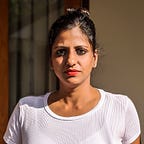Chile Independence Day or as The Chileans Call It, Fiestas Patrias — In a Memoir
A week-long rendezvous
Today is the independence day of Chile, which is also called Fiestas Patrias or dieciocho, the 18th. Having celebrated this grand day in its mother country, I promise you that the one week of celebrations preceding the independence day and on the day itself are unmatchable. And why shouldn’t they be?
On this date in 1820, Chile overthrew Spain and freed herself from 300-year-long captivity.
Chileans are thrilled around their independence day and celebrate it with honesty, love, and passion. Children, students, adults, grandparents all dress up, decorate, cook, visit their families, talk, celebrate, drink, host barbeques, dance, sing, and act.
The preparations for the grand day and the festivities start by the 10–11th. Though 11th is a horrific date for Chile as its parliament was bombarded by a dictator on this same day and thus had commenced the dictatorship(more on this later), this date doesn’t sadden Chileans anymore. They have left the suffering behind, and rather than crying over the old times, they celebrate; Chileans prefer to laugh and enjoy while they can, the mother of my Airbnb couple once told me.
The students and teachers of the school on the island of Chiloe I was teaching English at shut down classes a week before and got busy practicing cueca, the national dance of Chile, decorating the classrooms, drawing Chilean and island legends and customs on posters, singing songs, planning customary food, rehearsing plays, cutting colored papers to make beautiful frills, and then tying them to the ceiling, fan, and glass windows so that they ran down them freely.
Then on the celebration day, which was a couple of days before the 18th, teachers, students, and school inspectors gathered in the school, dressed up in traditional dresses, which was a poncho and a hat over a trouser-shirt for men and a colorful, knee-length dress cinched at the waist for the women. Some lady teachers wore other styles of customary dresses, too, which were specific to the island.
The cueca was the king of the day, as almost all students and even the most uptight teachers danced to its tunes, with handkerchiefs in their hands, tapping their feet, circling their partner, flirting, and laughing.
I laughed as my little 6th and 7th standard students raced with an egg on a spoon which they held in their mouth. Some of them wore a plastic bag over their legs and ran, while the others tried to eat an apple which was tied above their heads on a string using just their mouths. Vino tinto or red wine was freely passed among the teachers in the staff room, and I wasn’t shy that day.
Then the school shut off so that the families could celebrate.
The Islanders said that the celebrations on the island were not as grand as compared to other parts of the country, but I would like to disagree.
I was invited to many parties over the one-week and together with friends, families and performance artists, we lit campfires and barbeques or as they asados, danced as many forms of cuecas as are the varieties of Indian mango, drank pisco sours, wine, and terremotos (earthquake literally, a drink made with pineapple ice cream, a sweet white wine, and grenadine), ate beef and chicken anticuchos (grilled meat skewers) and empanadas de pino and chatted around the fire.
And this is what we did all day and night long, for many days.
I spent the dieciocho with my host mother and her daughter’s family in their countryside home drinking pisco sours and eating chicken empanadas and chicken anticuchos which were prepared especially for me as I don’t eat beef. What more can you ask from life?
All over the country, people celebrate Fiestas Patrias in their own way; in some parts, the national sport Rodeo Chileno is played, some people light firecrackers, some play other conventional games, but everyone dance cueca, sing, eat, and drink while sharing their joy with as many people as they can.
The local legends, customs, and beliefs might drive the celebration, but every single house of Chile hosts the Chilean flag which flies high above their heads and roofs all day long.
The feeling is one and special, we are free. Let’s rejoice in our freedom.
It was a memorable week, and I hope you felt the passion that every Chilean fills up with on this day.
Have you seen such grand independence day celebrations anywhere else?
Originally published at www.onmycanvas.com.
A writer or a painter or any artist appreciates nothing more than an honest recognition of his or her work. It keeps the artist going on the harder days.
If you enjoyed this memoir, please clap 👏🏻 below (clap as much as you like).
To stay connected and be a part of my adventures, follow me on Instagram, Facebook, and Twitter. I regularly write at onmycanvas.com. To accompany me on my travels across the world, subscribe to my blog.
If you didn’t like what you read or saw, then also let me know what I can improve :)
